Introduction to Ferrite Core Transformers
Ferrite core transformers are essential components in various electrical and electronic applications, ranging from power supplies to high-frequency communication systems. These transformers utilize ferrite materials as their core, which offers several advantages over traditional iron cores. In this comprehensive guide, we will delve into the basics of ferrite core transformers, exploring their construction, properties, and applications.
What is a Ferrite Core Transformer?
A ferrite core transformer is an electrical device that consists of a ferrite core surrounded by conductive wire windings. The primary function of a transformer is to transfer electrical energy from one circuit to another through electromagnetic induction. Ferrite core transformers are specifically designed to operate at high frequencies and provide efficient energy transfer with minimal losses.
Key Components of a Ferrite Core Transformer
- Ferrite Core:
- Composed of ferromagnetic ceramic material
- High electrical resistivity and low eddy current losses
-
Suitable for high-frequency applications
-
Wire Windings:
- Primary and secondary windings
- Conductive wire (usually copper) wound around the ferrite core
-
Determines the transformer’s turns ratio and voltage transformation
-
Bobbin or Former:
- Insulating material that supports and separates the windings
- Provides mechanical stability and electrical isolation
Ferrite Materials and Their Properties
Ferrite materials are a class of ceramic compounds composed of iron oxide (Fe2O3) combined with other metal oxides. These materials exhibit unique magnetic and electrical properties that make them ideal for use in high-frequency transformers.
Types of Ferrite Materials
- Manganese-Zinc (MnZn) Ferrites:
- High permeability and low loss at frequencies up to a few MHz
-
Commonly used in power conversion applications
-
Nickel-Zinc (NiZn) Ferrites:
- Lower permeability but higher resistivity compared to MnZn ferrites
- Suitable for high-frequency applications (up to hundreds of MHz)
Magnetic Properties of Ferrite Materials
- High Permeability:
- Ferrite materials have high magnetic permeability
-
Allows for efficient concentration and channeling of magnetic flux
-
Low Coercivity:
- Ferrite materials have low coercivity (ease of magnetization and demagnetization)
-
Enables efficient energy transfer and minimizes hysteresis losses
-
High Electrical Resistivity:
- Ferrite materials have high electrical resistivity
- Minimizes eddy current losses at high frequencies

Advantages of Ferrite Core Transformers
Ferrite core transformers offer several advantages over transformers with iron cores:
- High-Frequency Operation:
- Ferrite materials have low losses at high frequencies
-
Enables efficient operation in high-frequency applications
-
Compact Size and Light Weight:
- Ferrite cores have high permeability, allowing for smaller transformer sizes
-
Lightweight construction compared to iron core transformers
-
Low Power Losses:
- High electrical resistivity of ferrite materials minimizes eddy current losses
-
Low hysteresis losses due to low coercivity
-
Wide Operating Temperature Range:
- Ferrite materials maintain their properties over a wide temperature range
- Suitable for applications with varying environmental conditions
Applications of Ferrite Core Transformers
Ferrite core transformers find extensive use in various electrical and electronic applications:
- Switch-Mode Power Supplies (SMPS):
- Used in power conversion stages of SMPS
-
Provides efficient voltage transformation and isolation
-
High-Frequency Communication Systems:
- Used in radio frequency (RF) transformers and coupling transformers
-
Enables efficient signal transmission and impedance matching
-
Pulse Transformers:
- Used in pulse generation and shaping circuits
-
Provides fast rise times and accurate pulse reproduction
-
Noise Suppression and EMI Filtering:
- Used as common-mode chokes and EMI suppression transformers
- Helps reduce electromagnetic interference and noise in electronic systems
Designing Ferrite Core Transformers
Designing ferrite core transformers involves considering various factors to achieve optimal performance and efficiency. Here are some key considerations:
- Core Material Selection:
- Choose the appropriate ferrite material based on the frequency range and application requirements
-
Consider the permeability, resistivity, and temperature stability of the material
-
Winding Configuration:
- Determine the number of turns and winding arrangement (e.g., primary and secondary windings)
-
Optimize the winding geometry to minimize leakage inductance and inter-winding capacitance
-
Core Geometry and Size:
- Select the appropriate core shape and size based on the power handling requirements and available space
-
Consider the core’s cross-sectional area, window area, and magnetic path length
-
Losses and Efficiency:
- Minimize core losses by selecting a suitable ferrite material and optimizing the core geometry
-
Reduce winding losses by using appropriate wire gauge and minimizing the winding resistance
-
Thermal Management:
- Consider the heat dissipation requirements of the transformer
- Provide adequate cooling mechanisms, such as heat sinks or forced air cooling, to prevent overheating
Manufacturing Ferrite Core Transformers
The manufacturing process of ferrite core transformers involves several steps:
- Core Fabrication:
- Ferrite powder is mixed with binders and pressed into the desired core shape
-
The pressed core is sintered at high temperatures to achieve the required magnetic properties
-
Winding Process:
- The conductive wire is wound around the bobbin or directly onto the ferrite core
-
The number of turns and winding arrangement are determined by the transformer’s specifications
-
Assembly and Encapsulation:
- The wound core is assembled with other components, such as terminals and mounting hardware
-
The transformer is encapsulated or potted with insulating material for protection and stability
-
Testing and Quality Control:
- The manufactured transformers undergo various tests to ensure proper functionality and adherence to specifications
- Tests may include electrical parameters, insulation resistance, and high-voltage withstand tests
Frequently Asked Questions (FAQ)
- What is the difference between ferrite core transformers and iron core transformers?
-
Ferrite core transformers use ferrite materials, which have high electrical resistivity and are suitable for high-frequency applications. Iron core transformers use iron alloys and are typically used for low-frequency and power applications.
-
Can ferrite core transformers be used for power transmission?
-
Ferrite core transformers are primarily used in low-power, high-frequency applications. For power transmission, iron core transformers or other specialized transformers are more commonly used.
-
How do I select the appropriate ferrite material for my application?
-
The choice of ferrite material depends on the frequency range and specific requirements of your application. MnZn ferrites are suitable for frequencies up to a few MHz, while NiZn ferrites are used for higher frequencies. Consider factors such as permeability, resistivity, and temperature stability when selecting the material.
-
What is the purpose of the bobbin in a ferrite core transformer?
-
The bobbin, also known as the former, is an insulating material that supports and separates the windings of the transformer. It provides mechanical stability and electrical isolation between the windings and the core.
-
How can I minimize losses in ferrite core transformers?
- To minimize losses, select a ferrite material with low loss characteristics suitable for your frequency range. Optimize the core geometry to minimize core losses, and use appropriate wire gauge and winding techniques to reduce winding losses. Proper thermal management can also help in minimizing losses and preventing overheating.
Conclusion
Ferrite core transformers are vital components in various electrical and electronic applications, particularly in high-frequency systems. Their unique properties, such as high permeability, low losses, and compact size, make them an ideal choice for efficient energy transfer and signal coupling.
Understanding the basics of ferrite core transformers, including their construction, materials, and design considerations, is crucial for engineers and designers working with these components. By selecting the appropriate ferrite material, optimizing the winding configuration, and considering factors such as losses and thermal management, designers can create efficient and reliable ferrite core transformers for their specific applications.
As technology continues to advance, the demand for high-performance ferrite core transformers is expected to grow. With ongoing research and development in ferrite materials and manufacturing processes, we can anticipate further improvements in the efficiency, reliability, and miniaturization of these essential components.
| Ferrite Material | Permeability Range | Resistivity (Ω·m) | Suitable Frequency Range |
|---|---|---|---|
| MnZn | 1000 – 20000 | 0.1 – 10 | Up to a few MHz |
| NiZn | 10 – 1000 | 10^4 – 10^7 | Up to hundreds of MHz |
Table 1: Comparison of MnZn and NiZn ferrite materials
| Application | Ferrite Core Transformer Function |
|---|---|
| Switch-Mode Power Supplies (SMPS) | Voltage transformation and isolation in power conversion |
| High-Frequency Communication Systems | Impedance matching and signal coupling in RF circuits |
| Pulse Transformers | Pulse generation and shaping in high-speed digital circuits |
| Noise Suppression and EMI Filtering | Reduction of electromagnetic interference and noise |
Table 2: Applications of ferrite core transformers
In conclusion, ferrite core transformers are indispensable components in the realm of electrical and electronic engineering. By gaining a solid understanding of their fundamentals, designers and engineers can harness the potential of these transformers to develop efficient, reliable, and high-performance systems across a wide range of applications.
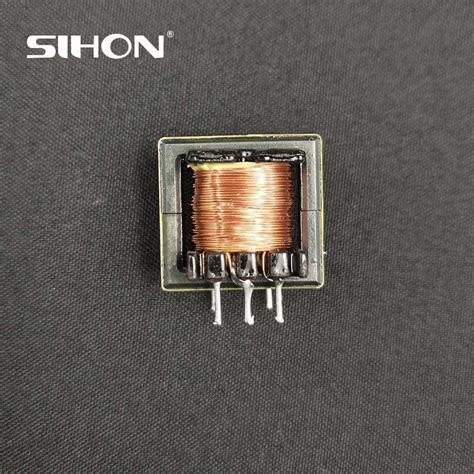
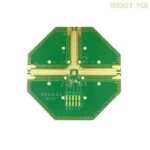
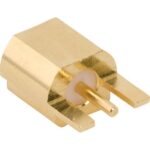
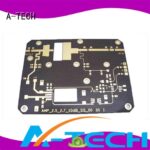
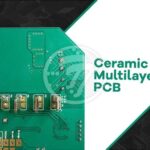
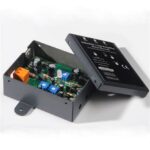
Leave a Reply